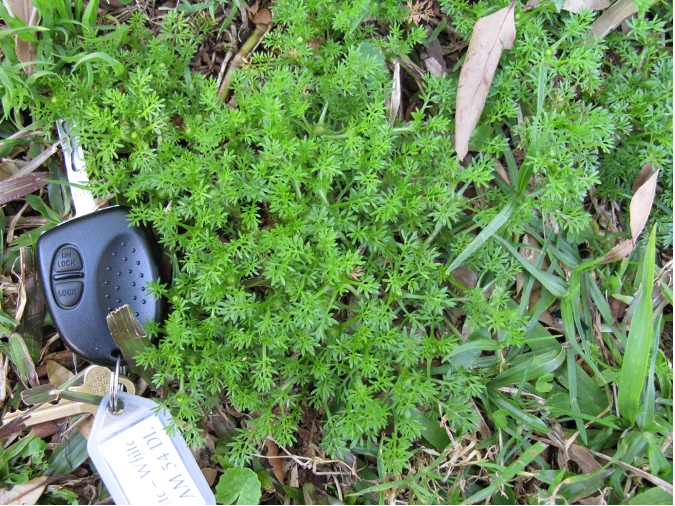
(Photo from North Carolina Extension)
Lawn Burweed is a low-growing winter annual that is known for its panful seeds left behind in summer landscapes. The weed germinates in fall and remains small throughout the cold months. Then it rapidly grows in spring and develops spine-tipped burs that plague barefoot homeowners and their pets. We’ve put together a list of suggestions here for working to eradicate this pest in your lawns:
- Maintain a dense and healthy lawn, as vigorous lawn grasses can outcompete burweed for light, water, and nutrients, thereby reducing the level of infestation
- Fertilize and lime according to soil test results
- Mow at the proper height and frequency for your specific turfgrass
- If caught early, plants can be manually removed by the roots
- Pre-emergent herbicide can be applied in fall to prevent weed seed germination. A chemical that can be used in most lawns is Isoxaben.
- Post-Emergent Herbicide Application: Apply a post-emergent herbicide December-February to kill the plant before its fruiting structures develop. Control is not impossible in March, April, and May, but the spines have already formed by this time and will remain after the weed dies. An example of an appropriate chemical is a 3-way blend of 2,4-D + MCPP + Dicamba if used on a bermudagrass, tall fescue, or zoysiagrass. Celsius can be used in warm season turf grasses. Atrazine may be used on bermudagrass that is fully dormant.
Most herbicides that work best at controlling lawn burweed are readily available at farm and garden stores. Be sure to READ HERBICIDE LABELS CAREFULLY and follow ALL label instructions. As always, give us a call for proper identification and any weed control questions you have at 706-743-8341